Musisz być zalogowany/a
Зберігання енергії
| Obraz | Zobacz produkt | Nr producenta | ||||
|---|---|---|---|---|---|---|
| -- |
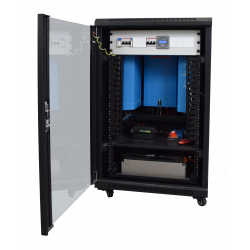
|
DACPOL | ДІМ ЗБЕРІГАННЯ ЕНЕРГІЇ ESS | ZOBACZ | -- | На замовлення |
| picture_as_pdf |
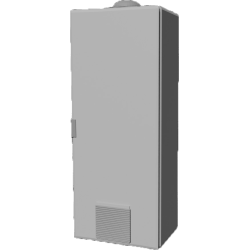
|
DACPOL | ENERGY STORAGE NMC | ZOBACZ | -- | На замовлення |
| picture_as_pdf |
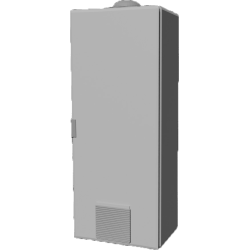
|
DACPOL | ENERGY STORAGE LFP | ZOBACZ | -- | На замовлення |
| picture_as_pdf |
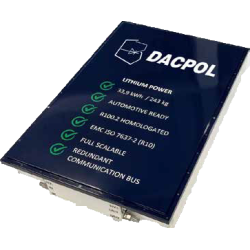
|
DACPOL | Battery Pack for Vehicles | ZOBACZ | -- | На замовлення |
| picture_as_pdf |
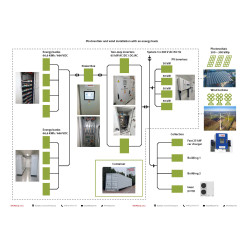
|
DACPOL | Photovoltaic and wind installation with an energy bank | ZOBACZ | -- | На замовлення |
| picture_as_pdf |
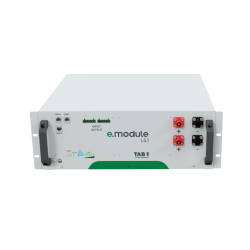
|
TAB | Модуль TAB e.module L5.1 48V | ZOBACZ | 1026194 | 20 |
Електрохімічні батареї, або акумулятори, дозволяють зберігати енергію у легкодоступній формі. Перевагами акумуляторів є висока щільність енергії. Щільність енергії — це питома кількість накопиченої електричної енергії, яку можна виразити за об’ємом або масою. До недоліків використання акумуляторів належать саморозряд, знос акумулятора, який проявляється у зміні параметрів — так зване старіння батареї, тривалий час заряджання, вплив температури на акумулятор, а також у деяких технічних рішеннях — короткий термін служби.
У системах зберігання енергії використовуються два типи акумуляторів: свинцево-кислотні та літій-іонні.
Типи систем накопичення енергії
Свинцево-кислотні акумулятори мають ККД близько 70%. Вони характеризуються низькою вартістю, простотою зарядного пристрою та можливістю короткочасного навантаження великими струмами. Завдяки цим властивостям їх застосовують у системах безперебійного живлення (UPS). Основним недоліком є короткий термін служби (приблизно 1000 циклів заряд-розряд) та їхня конструкція. У свинцево-кислотних акумуляторах електроліт знаходиться у рідкому стані, що може призводити до витоків і вимагає періодичного доливання електроліту. Щоб уникнути цієї проблеми, свинцево-кислотні акумулятори виготовляють необслуговуваними:
- SLA – Sealed Lead Acid (герметичні свинцево-кислотні акумулятори)
- VRLA – Valve Regulated Lead Acid (свинцево-кислотні з клапанним регулюванням)
Їх виготовляють за двома технологіями:
- Гелеві акумулятори, у яких водний розчин сірчаної кислоти змішаний із двооксидом кремнію і має консистенцію гелю, виконуючи роль електроліту. Проте такі акумулятори мають обмежену здатність віддавати великий струм і рідко застосовуються у потужних установках.
- Акумулятори AGM (Absorbed Glass Mat), у яких електроліт вбирається у сепаратор із пористого скловолокна.
Літій-іонні акумулятори (Li-ion) мають ККД близько 94%. Ці елементи є одними з найлегших, тому використовуються в електроніці. Згодом вони почали застосовуватись у електромобілях. Акумулятори для електромобілів більш довговічні (служать десятки років, до 1800 циклів заряд-розряд), оснащені системами охолодження та нагрівання. Вони можуть заряджатися від 0 до 80% за 15–30 хвилин без значного впливу на термін служби. Завдяки досягненням в галузі електромобільності, літій-іонні акумулятори розглядають як стаціонарні накопичувачі енергії для відновлюваних джерел енергії, що мають нестабільну та нерегулярну роботу.
Нікель-металогідридні акумулятори (NiMH) мають ККД до 92% при строку служби до 2000 циклів заряд-розряд. Основною їхньою перевагою є відсутність токсичного кадмію. Ці елементи характеризуються високою щільністю енергії, ємністю та зниженим ефектом пам’яті. Недоліком є неможливість віддавати великі струми. NiMH акумулятори схильні до саморозряду, однак технології розвиваються, і цей ефект поступово зменшується.
Компенсація реактивної потужності з використанням енергетичних банків
Системи безперебійного живлення (UPS) застосовують для живлення критично важливих пристроїв у разі відключення електромережі або для захисту чутливих компонентів від перешкод у мережі.
У UPS встановлюють конденсатори, тому з мережі споживають не лише активну, а й реактивну (ємнісну) потужність. У нових конструкціях також застосовують схеми корекції коефіцієнта потужності (PFC), що знижують рівень гармонік та реактивної потужності, що дозволяє підвищити коефіцієнт потужності cosφ при повному навантаженні. Альтернативним рішенням є використання фазового зсуву на вході, що дозволяє звести ємнісну вхідну потужність до нуля.
Як влаштоване накопичувач електричної енергії?
Складові системи накопичення енергії включають:
- двонаправлений перетворювач – інвертор DC/AC і AC/DC,
- батарейний блок – набір хімічних акумуляторів,
- система управління батареями (BMS),
- програмований контролер – для керування алгоритмами,
- система моніторингу та візуалізації (GUI – графічний інтерфейс) – забезпечує нагляд і контроль над установкою,
- допоміжні елементи для підключення до мережі – вимірювальне обладнання або, наприклад, роздільний трансформатор.
Особливу увагу заслуговує двонаправлений перетворювач. Це перетворювач DC/AC та AC/DC, який відповідає за керування процесами заряджання і розряджання акумуляторів, а також обмін енергією між електромережею і накопичувачем. Він повинен забезпечувати відповідні параметри напруги та при перевантаженні – потрібний піковий струм. Система має синхронізуватися з мережею, а при відключенні живлення забезпечувати автономну роботу. Також перетворювач має «піклуватися» про акумулятор: заряджати відповідно до характеристик, не допускати перезаряду і перегріву, а також запобігати тепловому розгону. Перетворювач має взаємодіяти з BMS та забезпечувати гальванічну розв’язку, наприклад, за допомогою вихідного трансформатора.
Фотовольтаїка – накопичувачі енергії підвищують її рентабельність
Пристрій, який підвищує рентабельність фотовольтаїчних установок — це накопичувачі енергії. Замість того, щоб передавати надлишки виробленої енергії в мережу, фотовольтаїка з накопичувачем зберігає її в батареях, таких як нікель-металогідридні (NiMH) або все частіше — літій-іонні (Li-ion). Завдяки цьому енергія доступна в будь-який час, незалежно від умов і тарифів. Накопичувач енергії робить об’єкт незалежним від електромережі. Споживання електроенергії в такому випадку фактично стає безкоштовним.
Які вимоги висуває фотовольтаїка – акумулятори для PV-систем
Акумулятори у PV-системах мають відповідати певним вимогам. Накопичувач із пропозиції DACPOL має бути підібраний насамперед за ємністю. Вона має відповідати загальній потужності установки. Рекомендується 1–1,5 кВт·год ємності на 1 кВт пік потужності установки.
Другий важливий параметр — потужність, яка визначає, скільки пристроїв одночасно може живитися від накопичувача. Як PV-система підбирається під енергетичні потреби будівлі, так і акумулятор має підбиратися аналогічно — тоді він може служити як для накопичення енергії від ВДЕ, так і для аварійного живлення.
Не менш важливі продуктивність і ККД акумуляторів. У побутових накопичувачах DACPOL використовуються:
- літій-іонні акумулятори з найвищим ККД,
- нікель-металогідридні акумулятори з трохи нижчим ККД.
Накопичувачі з такими акумуляторами забезпечують надійну роботу фотовольтаїчних систем та живлених ними пристроїв.
Накопичувачі енергії з фотовольтаїкою та свинцево-кислотні акумулятори
Накопичувачі енергії на базі свинцево-кислотних акумуляторів не рекомендуються для фотовольтаїки. Вони мають короткий термін служби через низьку стійкість до частих циклів заряд-розряд. Також вони швидко втрачають ємність при високих температурах і мають великі габарити, через що потужні накопичувачі займають багато місця.



